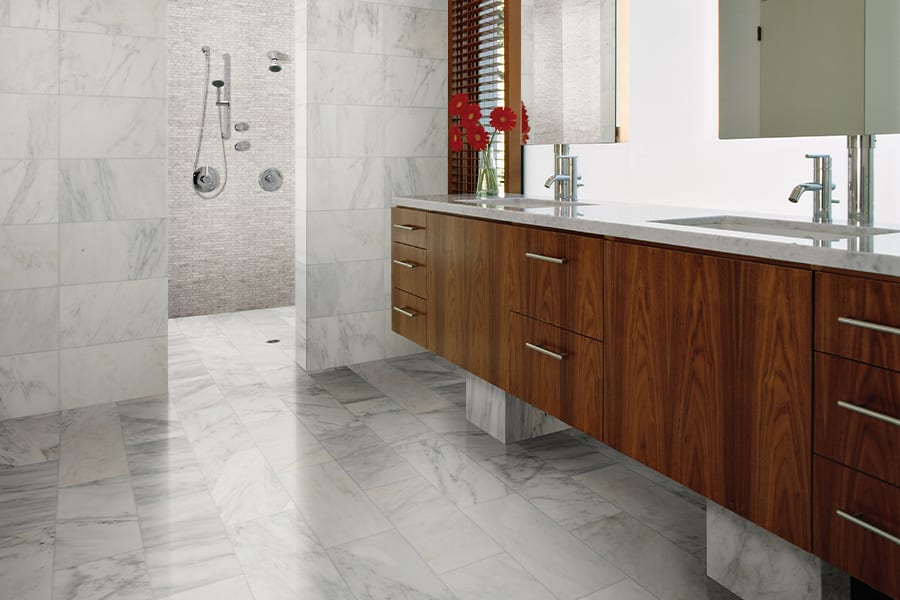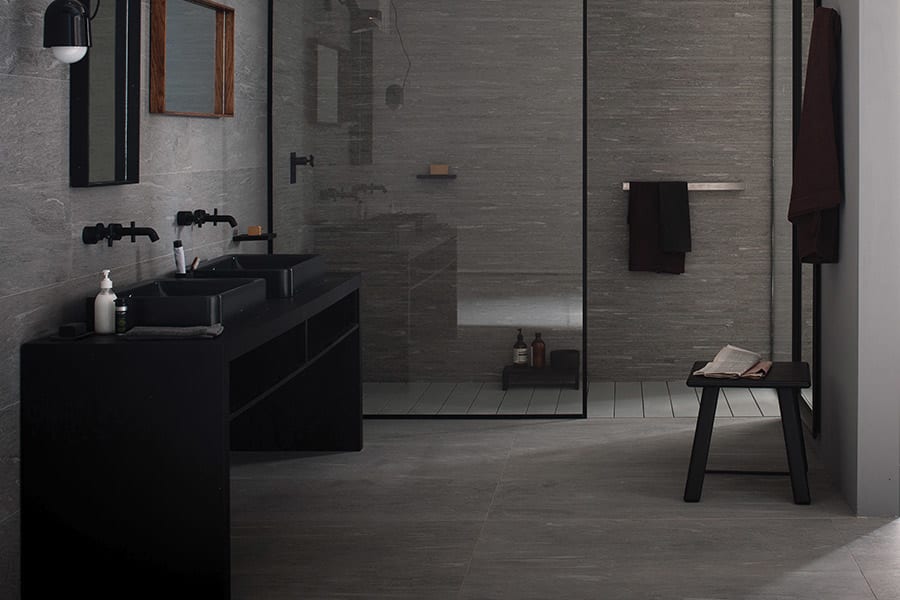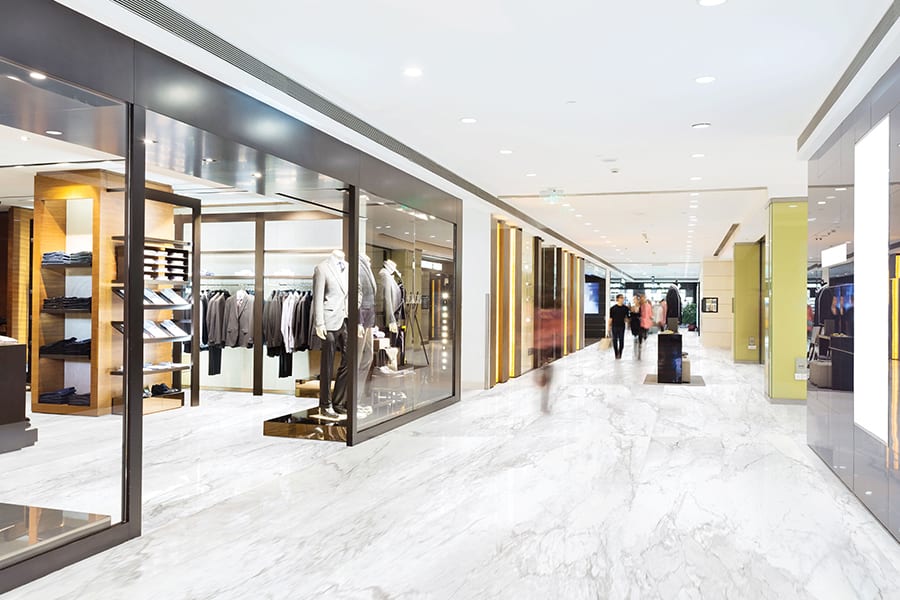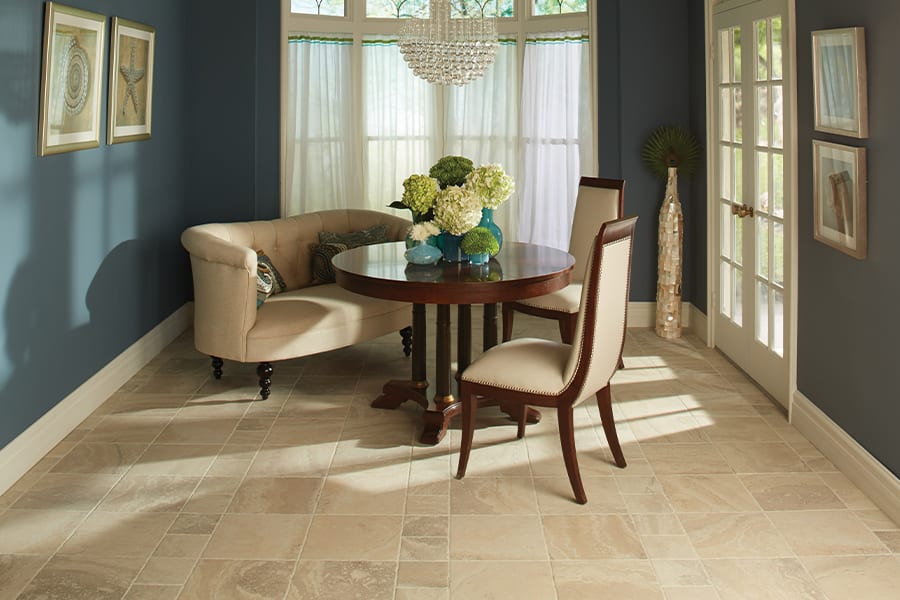Stone flooring styles review
Just like you, every stone floor has one-of-a-kind presence and personality. It is said that Mother Nature never repeats herself and natural stone floors are proof of this wisdom.
There are so many choices of color, style and finish, where do you start? Well, with the basics, of course.
Typically, natural stone floor tile sizes are 12”x 12”, 13”x 13”, 16”x 16” and 18”x 18”.
Next, natural stone floor tile comes with two kinds of edges: a polished bull-nose edge that has a rounded or curved appearance, or a polished straight 90-degree edge that offers a more contemporary look.
There are so many choices of color, style and finish, where do you start? Well, with the basics, of course.
Typically, natural stone floor tile sizes are 12”x 12”, 13”x 13”, 16”x 16” and 18”x 18”.
Next, natural stone floor tile comes with two kinds of edges: a polished bull-nose edge that has a rounded or curved appearance, or a polished straight 90-degree edge that offers a more contemporary look.
Know what you're talking about
Generally speaking, there are three basic kinds of rock from which we cut floor stone:
Sedimentary, from which we get travertine and limestone.
Igneous, from which we get granite.
Metamorphic, from which we get slate and marble.
Travertine is a crystallized, partially metamorphosed limestone, formed by natural mineral springs. It has a honeycombed structure and a lot of surface pitting. It typically comes in two basic varieties: natural or filled. The pits can be filled with resin or grout to give each tile a solid surface or left unfilled for a more highly textured surface. The filled-in areas won’t polish out, which creates an interesting contrast.
The colors are generally warm, from almost ivory to Persian red and dark brown. A striking flooring in any room.
Due to its porous surface, travertine will require resealing.
Limestone is actually a “young” marble, formed from the consolidation of seashells and sediment. Each stone can be expected to have a certain amount of surface pitting, fossilized shells, fissures and mineral striations. There may also be degree of edge chipping. It’s a perfect choice for bathrooms, dining rooms and hallways and ranges in color from ivory to golden brown to black. Limestone should be sealed to protect the stone’s natural beauty and performance.
Sandstone is a sedimentary stone that is primarily composed of loose grains of quartz sand that are rough in texture. Compressing sand and water over time forms this coarse-grained rock. A hard, yet very porous stone, it must be thoroughly sealed when used as flooring.
Granite is the hardest of all flooring stones with a very dense grain, making it virtually impervious. Formed from liquid magma — the substance found at the core of the Earth — it has nearly the hardness and durability of a diamond. If polished, its high-gloss finish will resist scratching and etching, making it an ideal choice for your kitchen floor. Imagine it in foyers, bathrooms, or libraries. It pairs nicely with other natural stones for an artsy look.
Granite is found in a variety of rich colors: from “Black Galaxy,” a luxurious black stone with small white or gold crystals, to “Tropical Brown” filled with tan, brown and black flecks, to “Maple Leaf Red,” a vibrant mixture of reds and blacks and “Tiger Skin White,” a wonderful striping of black and white. One manufacturer lists over 2,500 colors of granite!
Marble is a metamorphic rock made famous by the buildings of Ancient Rome and Greece. They loved it because it was soft enough to be worked with simple tools but hard enough to last many lifetimes. This crystallized limestone comes in many different color variations and usually includes a dazzling vein pattern of color that contrasts with its base color.
For example: “Crema Marfil” is light cream color with veins of a dark brown sugar. “Dark Emperador” is a popular warm brown with peach notes and lightning-like veins of white. White or bluish-white “Carrara” marble comes from ancient quarries in Tuscany. The stone has been prized since the Romans began shipping it home for their monuments. Michelangelo carved David and Moses out of it. Marble has a legendary elegance that makes it a great choice for foyers, dining rooms, libraries — any room that needs a touch of classic sophistication.
Since marble is more porous than granite, it’s more susceptible to staining and not the best choice for kitchen floors. Some marble colors have special properties. Green and black marbles are not recommended for wet areas of your home. Green marble will absorb water and curl or warp. When black marble gets wet it “spalls,” which means small pieces may break apart.
Slate is a fine-grained metamorphic rock that splits into sheets easily. It is composed of clay, quartz and shale. It’s highly versatile and adds a rustic appearance to any room. The natural “clefting” along the surface gives it a unique layered look. It’s very dense and can be used for floors, walls, and roofs. Slate is water resistant, which makes it ideal for outdoor applications like patios and pool surrounds. Slate comes in every color you can imagine: Rich red, orange, gold, mauve, green, blue, black, rust and brown. It adapts beautifully to every room in your house.
Agglomerate Stone or Manufactured Stone is made from natural stone chips suspended in a binder such as cement, epoxy resins, or polyester. The most well known agglomerated stone is poured-in-place terrazzo, used in building for thousands of years. These products offer the look of natural stone but are stain and scratch resistant, offer consistency and strength and are virtually maintenance free.
Mother Nature has provided a huge palette of colors and textures. The fun part is choosing what’s perfect for your neck of the woods.
Sedimentary, from which we get travertine and limestone.
Igneous, from which we get granite.
Metamorphic, from which we get slate and marble.
Travertine is a crystallized, partially metamorphosed limestone, formed by natural mineral springs. It has a honeycombed structure and a lot of surface pitting. It typically comes in two basic varieties: natural or filled. The pits can be filled with resin or grout to give each tile a solid surface or left unfilled for a more highly textured surface. The filled-in areas won’t polish out, which creates an interesting contrast.
The colors are generally warm, from almost ivory to Persian red and dark brown. A striking flooring in any room.
Due to its porous surface, travertine will require resealing.
Limestone is actually a “young” marble, formed from the consolidation of seashells and sediment. Each stone can be expected to have a certain amount of surface pitting, fossilized shells, fissures and mineral striations. There may also be degree of edge chipping. It’s a perfect choice for bathrooms, dining rooms and hallways and ranges in color from ivory to golden brown to black. Limestone should be sealed to protect the stone’s natural beauty and performance.
Sandstone is a sedimentary stone that is primarily composed of loose grains of quartz sand that are rough in texture. Compressing sand and water over time forms this coarse-grained rock. A hard, yet very porous stone, it must be thoroughly sealed when used as flooring.
Granite is the hardest of all flooring stones with a very dense grain, making it virtually impervious. Formed from liquid magma — the substance found at the core of the Earth — it has nearly the hardness and durability of a diamond. If polished, its high-gloss finish will resist scratching and etching, making it an ideal choice for your kitchen floor. Imagine it in foyers, bathrooms, or libraries. It pairs nicely with other natural stones for an artsy look.
Granite is found in a variety of rich colors: from “Black Galaxy,” a luxurious black stone with small white or gold crystals, to “Tropical Brown” filled with tan, brown and black flecks, to “Maple Leaf Red,” a vibrant mixture of reds and blacks and “Tiger Skin White,” a wonderful striping of black and white. One manufacturer lists over 2,500 colors of granite!
Marble is a metamorphic rock made famous by the buildings of Ancient Rome and Greece. They loved it because it was soft enough to be worked with simple tools but hard enough to last many lifetimes. This crystallized limestone comes in many different color variations and usually includes a dazzling vein pattern of color that contrasts with its base color.
For example: “Crema Marfil” is light cream color with veins of a dark brown sugar. “Dark Emperador” is a popular warm brown with peach notes and lightning-like veins of white. White or bluish-white “Carrara” marble comes from ancient quarries in Tuscany. The stone has been prized since the Romans began shipping it home for their monuments. Michelangelo carved David and Moses out of it. Marble has a legendary elegance that makes it a great choice for foyers, dining rooms, libraries — any room that needs a touch of classic sophistication.
Since marble is more porous than granite, it’s more susceptible to staining and not the best choice for kitchen floors. Some marble colors have special properties. Green and black marbles are not recommended for wet areas of your home. Green marble will absorb water and curl or warp. When black marble gets wet it “spalls,” which means small pieces may break apart.
Slate is a fine-grained metamorphic rock that splits into sheets easily. It is composed of clay, quartz and shale. It’s highly versatile and adds a rustic appearance to any room. The natural “clefting” along the surface gives it a unique layered look. It’s very dense and can be used for floors, walls, and roofs. Slate is water resistant, which makes it ideal for outdoor applications like patios and pool surrounds. Slate comes in every color you can imagine: Rich red, orange, gold, mauve, green, blue, black, rust and brown. It adapts beautifully to every room in your house.
Agglomerate Stone or Manufactured Stone is made from natural stone chips suspended in a binder such as cement, epoxy resins, or polyester. The most well known agglomerated stone is poured-in-place terrazzo, used in building for thousands of years. These products offer the look of natural stone but are stain and scratch resistant, offer consistency and strength and are virtually maintenance free.
Mother Nature has provided a huge palette of colors and textures. The fun part is choosing what’s perfect for your neck of the woods.
Request an estimate
The big finish
Your new stone floor will come with any one of a number of finishes on it. The finish creates greater variety within categories. The same granite, for example, takes on a totally different look when it takes on a totally different finish. Here’s quick primer on finishes.
A polished surface creates a mirror-like shine. Fabricators use a progressively finer polishing head to bring out the beauty of the crystals within the stone. Depending on the stone, the polish may last a long time or may be unstable. Granite, marble and limestone are frequently polished, and require varying degrees of maintenance to preserve their shine.
A honed surface produces a flat, matte, or satin finish by stopping short of the last stage of polishing. The stones will show fewer scratches and will require little maintenance. The best choices for this surface are, slate, limestone and marble.
An acid-washed finish is creates an antique finish. Once the stone has been polished, it is washed in acid, which removes most of the shine and reveals the crystalline structure of the stone. With this finish, scratches barely show. Most stones can be acid-washed, including marble, limestone, and granite.
Saw-cut flooring is truly rustic in appearance. After initial cutting, the stone is polished enough to take out the heaviest saw marks but not enough to give it a honed finish. If this style interests you, talk to your retailer about special orders.
To achieve a flamed finish, a blowtorch is passed over the stone, heating the surface crystals until they explode. This leaves a rough, unrefined texture ideal for areas like your shower, where slipping might be a concern. Granite is the best choice for flame finishing.
Split-faced finishing makes the texture rough but not as abrasive as a flamed finish.
Hand cutting and chiseling at the quarry expose the natural cleft of the stone. This finish is primarily applied to slate.
Tumbled stone has a lovely smooth or slightly pitted surface and broken or rounded edges and corners. The tiles are usually smaller and are often used in borders or decorative strips. Marble, travertine and limestone are the best candidates for a tumbled finish.
Brushed stone simulates the look of wear over time. It’s achieved by brushing the surfaces of the stone with hard plastic or metal brushes. The heavy action removes the softer part of the stone and creates a worn-down or medieval look.
If you’re looking for flooring that is beautiful, unique and timeless, then stone may be the answer. There are so many choices that we urge you to visit a retailer so you can see and touch the stone. Only then will you discover which one speaks to you and your lifestyle.
A polished surface creates a mirror-like shine. Fabricators use a progressively finer polishing head to bring out the beauty of the crystals within the stone. Depending on the stone, the polish may last a long time or may be unstable. Granite, marble and limestone are frequently polished, and require varying degrees of maintenance to preserve their shine.
A honed surface produces a flat, matte, or satin finish by stopping short of the last stage of polishing. The stones will show fewer scratches and will require little maintenance. The best choices for this surface are, slate, limestone and marble.
An acid-washed finish is creates an antique finish. Once the stone has been polished, it is washed in acid, which removes most of the shine and reveals the crystalline structure of the stone. With this finish, scratches barely show. Most stones can be acid-washed, including marble, limestone, and granite.
Saw-cut flooring is truly rustic in appearance. After initial cutting, the stone is polished enough to take out the heaviest saw marks but not enough to give it a honed finish. If this style interests you, talk to your retailer about special orders.
To achieve a flamed finish, a blowtorch is passed over the stone, heating the surface crystals until they explode. This leaves a rough, unrefined texture ideal for areas like your shower, where slipping might be a concern. Granite is the best choice for flame finishing.
Split-faced finishing makes the texture rough but not as abrasive as a flamed finish.
Hand cutting and chiseling at the quarry expose the natural cleft of the stone. This finish is primarily applied to slate.
Tumbled stone has a lovely smooth or slightly pitted surface and broken or rounded edges and corners. The tiles are usually smaller and are often used in borders or decorative strips. Marble, travertine and limestone are the best candidates for a tumbled finish.
Brushed stone simulates the look of wear over time. It’s achieved by brushing the surfaces of the stone with hard plastic or metal brushes. The heavy action removes the softer part of the stone and creates a worn-down or medieval look.
If you’re looking for flooring that is beautiful, unique and timeless, then stone may be the answer. There are so many choices that we urge you to visit a retailer so you can see and touch the stone. Only then will you discover which one speaks to you and your lifestyle.













